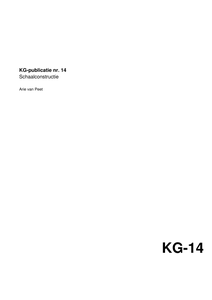Welke rol kan mediation in de kerk spelen in de diverse geledingen en specifieke activiteiten? In dit artikel wordt ingegaan op kerkelijke conflicten, gelaagdheid in church mediation, en specifieke dilemma's van church mediation. Daarnaast komen enkele benaderingen aan bod zoals: helende strategieën, de systeembenadering, en mediation bij pastoraat en gemeenteopbouw.
DOCUMENT

In their attempts to offer visitors meaningful experiences in historical churches, museums are increasingly experimenting with augmented reality. Arguing that an augmented reality experience should be counted as a material event in its own right, I focus on the aesthetic strategies employed in two augmented reality experiences. The first is an augmented virtuality installation that was presented in the Old Church in Amsterdam (Netherlands). The second concerns a HoloLens experience hosted by St. Peter’s Church in Leuven (Belgium). Drawing on the work of Gernot Böhme (2017) and undertaking a sensory auto-ethnography, I demonstrate how bodily sensations in these augmented reality experiences altered my affective involvement with the church spaces. I found that strategies of defamiliarisation and fragmentation affected my disposition, effectively personalising the perceptional relationship between the church as an authoritative institution and myself in the role as the visitor. Building on recent discussions on museums’ function in society, I also discuss the potential of augmented reality experiences to play on a multitude of meanings, and particularly, in staging dispositions that move away from universal truths.
DOCUMENT
Buildings without an actual function but still very important in the set out of Appingedam and very interesting from an architectural and historical point of view. Advise on how to organise new functions in these old buildings through a church-carrousel.
DOCUMENT

The paper briefly describes the outcome of an approach to inventory of the current situation, inventory user demands and suggestions to improve energy efficiency and thermal comfort in Borgers' church.
DOCUMENT

This paper introduces an interactive scale model as a dynamic prototyping tool for designing public displays. This work particularly focuses on a technology-enhanced model that was developed for prototyping an interactive display for the Nieuwe Kerk, a historic church building on the Dam Square in Amsterdam.
DOCUMENT

Paper which introduces an method developed by the research group Duurzame Projectontwikkeling of the SIA-RAAK project Energieke Restauratie. Besides an discription of the method, it also describes the application of the method for three (fictional) case study projects: Dairy Factory Dongeradelen (Lioessens), Strawboard Factory Free (Oude Pekela) and Der Aa church (Groningen).
DOCUMENT

Het aantal kinderen dat slachtoffer is van kindermishandeling en huiselijk geweld is hoog en al jaren constant. Met de komst van moderne digitale technologieën wordt voorzichtig verkend of er oplossingsrichtingen liggen ten aanzien van dit probleem. Hoewel technologieën zoals big data en machine learning potentie hebben in het analyseren van grote hoeveelheden data en dus ook in het mogelijk (eerder) signaleren van kindermishandeling, zijn er de nodige programmatische en ethische overwegingen waar rekening mee dient te worden gehouden. Indien mogelijke toepassingen nader worden verkend, is het tevens van belang dat professionals binnen het sociale domein ook kennis hebben van de werking van de diverse vormen van digitale technologie en dat er wordt intensief wordt samengewerkt met de verschillende domeinen waarin de technologie nader wordt ontworpen.
DOCUMENT

There is much attention for the quality of the pedagogical vision of after school day-care (bso) nowadays (e.g. Schreuder et al, 2011). My PhD-study concentrates on social development and discourse practices of young children (4 – 7) in the bso. In this poster I will show strong strategies in conflict management of one caretaker. Strong strategies stimulate agency and autonomy of children (Mashford-Scott & Church, 2011). Weak strategies don’t. This study wants to contribute to qualitative evidence for how interactions of caretakers and children in after school day care can enable children’s social development
DOCUMENT
Rapport over schaalconstructies, onderdeel van de serie KG-publicaties van de Kenniskring Gedragsproblemen in de Onderwijspraktijk
DOCUMENT
